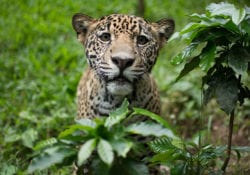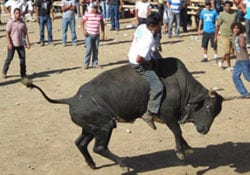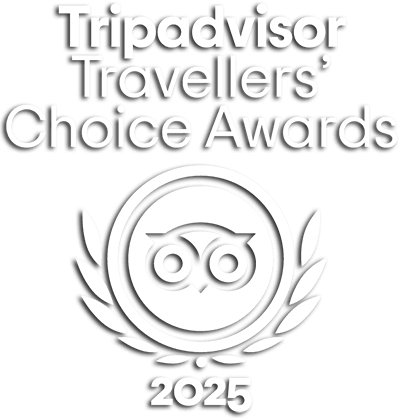Contributed by Mieke Leenders
Google animal rights in Costa Rica and you will be met with a long list of positive press, most recently about the Animal Welfare Bill of 2017. It took some time and quite a bit of convincing but with reported cases like those of Duke, the dog who lost his upper jaw after what is reported to be a machete attack, the law finally passed.

Caged Toucan in Puebla, Mexico
What this law also suggests is that for a long time, our furry companions have taken a backseat to the protection of wildlife, a cause Costa Rica is famous for. Wildlife is, of course, more than animal rights. It is protecting local heritage, the environment and investing in tourism. The domestic treatment of animals is a hidden affair and one that has garnished less attention until a couple of years ago.
All in all, animal rights in Costa Rica have reached far higher standards than some of its neighbors. A recent trip to Mexico had put that in perspective for me when right next to my hotel in Puebla, a “Pet Store” proudly presented a caged toucan as merchandise. After a lot of research, I discovered that animal trading is actually not illegal in Mexico and even worse, the steps towards preventing such practices had stagnated.
It just goes to show that the power of the people still carries a lot of weight and influence. Just like cases of Duke the dog, the local communities have to start caring before the government will. And luckily for Costa Rica and its more vulnerable inhabitants, the voices are getting louder and louder. But what are they saying exactly?
Animal Rights In Costa Rica – A Brief History
1998-2007: The Wildlife Protection Law and its shortcomings
“The Law of Conservation of Wildlife No. 7317, 1998; Ley de Vida Silvestre aims to preserve, protect and control the wildlife of Costa Rica. Wildlife is comprised of the continental and insular fauna that lives in natural temporary or permanent conditions in the country and, flora living in natural conditions in the country.” SINAC
Costa Rica has always been proud of its natural heritage. It is why most of us come here in the first place – to see all the forests, national parks, and of course the colorful wildlife that decorates it. This is why the 1998 law saw fit to protect this heritage and initiate conservation efforts.
Ever since the creation of this law, Costa Rica has been facing some difficulties in maintaining the goals they had set up for themselves. In 2002, they were forced to decriminalize animal abuse because the system could simply not support it. Later in 2007, a similar issue arose when the Association for the Preservation of Wild Flora and Fauna (APREFLOFAS), called for a rethinking of the 1998 law. The measures taken to prevent animal trafficking were deemed too liberal and the fines for crimes against wildlife far too low.
Additionally, many locals kept wild animals in their house, from exotic birds to monkeys. The group’s director, Gino Biamonte, stated that the original law has done nothing to prevent the latter from happening. Jorge Hernández, a wildlife biologist with the Ministry of Environment and Energy (MINAE), estimated that more than 300,000 wild animals were remaining in illegal captivity and he believed that this number would continue to grow.
The dilemma the country faced, Biomonte clarified, is that it does not have the infrastructure to handle the situation successfully. The animals taken from Costa Rican homes would need to be relocated and the country’s Natural Reserves would not have been able to support this.
2007-2016: The problems persist
Similar problems come to the surface. The call for reform in animal laws continues to grow and in 2011, lawmakers drafted Bill 18298, which gained a huge following but failed to pass. In 2014 Adriana Barrantes, spokeswoman for the Association for the Well-Being and Protection of Animals (ABAA), stated that the laws formed and proposed in these days were laws without teeth. Dog fighting had just been banned but she reiterated the lack of an efficient system to enforce these laws.
The eternal problem of infrastructure

Courtesy of Cahuita Sloth Sanctuary
The infrastructural problems which first came to light in 2007, continue to plague the country. In 2016, it was reported that the Sloth Sanctuary in Cahuita has been hiding a horrible secret from its victors. In the back, long rows of cages with more than 100 injured sloths were hidden from the public’s view. The Sanctuary’s owner, Avey-Arroyo, had received an inbox full of hate mail when this little secret got out. Michael Krumholtz visited the sanctuary and published his experience in the Tico Times. Avey-Arroyo took him back to the barracks where the injured sloths reside. She explained that it is often the only solution to the rising number of sloths being dropped off. Furthermore, the point was made that despite the creature’s popularity, not that much is known about them.

Courtesy of Kahl Kahler/TicoTimes
A similar article was published in the same year by Karl Kahler on the Simón Bolivar Zoo. The conditions here are terrible. Notoriously so. MINAE and other organizations criticized the set-up that housed the animals in far too small cages and always within the public’s eye. Later that year, the zoo communicated that they are undergoing structural changes to meet better standards. With the system of such a zoo already in place, Kahler concludes, easy solutions are few.

Guapo – Courtesy of ZooAve
Other organizations with similar missions do get a lot of credit. Places like ZooAve, home to Grecia the Toucan who will be introduced further below, have received a lot of praise for the same concept. They too are open to the public and charge an incredibly large entrance fee, but they make a stronger effort to mimic the animal’s natural surroundings and so give them a chance to, on occasion, escape the gaze of the hordes of visitors.
Good but somewhat clumsy Samaritans?
In a lot of practices listed so far, there is a pattern that’s beginning to show. While criticism rises by the year, the system and infrastructure in Costa Rica has never been able to keep up with the demands. From housing and selling wild animals to caging them, the country very often sees many problems and few solutions. Although famous for its biodiversity and even environmental efforts, a lot of land in Costa Rica is still occupied by huge resorts and farmlands, effectively destroying the animal’s natural habitat and creating infrastructural issues.
As far as behavior towards animals goes, a lot of seems to link to the fact that Ticos have always had a far closer relationship to wildlife than some of us in Europe and the United States. For us, many of these creatures are exotic and some even so far away from what we have ever seen, that they almost seem like a fairytale. But for some Costa Ricans, they could simply wander into their house.
A curious monkey would smell dinner and come in to steal some of it. They grew to love the monkey, kept feeding it, and soon “adopted” it into their family. Some people would not have good intentions at all, of course, and would illegally sell the animals they caught.
But a lot of people did love the animals and by neglecting to inform themselves about the actual needs of the animal, would be inadvertently harmful.
A Tico’s best friend

It seems the same can be said for Ticos and domesticated animals. In 2016, the nonprofit organization World Animal Protection released a survey on responsible ownership. The study showed that Ticos generally have deep affection for their dogs, but could be better owners. For example, a dog’s dental health and even desire for exercise and distraction is often overlooked. While most owners say they mainly keep their dog in the house or in the backyard, 12% would tie them up all day. Enclosing or indeed tying up a dog is one of the most harmful things you can do. A dog needs exercise and stimulation to maintain its health, just like us.
The pattern is clear. The love is often there. But the responsibility and education on the matter seems to be lacking
as well as the infrastructure to provide efficient solutions.
Another famous example is Territorio de Zaguates, the giant sanctuary home to more than 1300 dogs. They too shape their mission based on one of love but needed to close down temporarily due to lack of funds for their infrastructure and even some mean-spirited people who saw it fit to break in and poison some of the dogs.
2015-2017: The race towards the Animal Welfare Bill

2015 marked the year of a race toward a law that does have some teeth. At the end of 2014, the legislative session for the Animal Welfare Bill had started. The bill immediately gained momentum in 2015 when reports of animal abuse, specifically tied to pets, increased drastically.
The attack on Grecia the Toucan specifically struck a nerve. The wild toucan living somewhere in the area of Grecia, was viciously attacked by youngsters and lost the greater part of his upper beak in the process. In 2016, it was reported that Grecia had not only survived, but also had become the first toucan with a 3D printed beak. He is now a symbol against animal cruelty.
2016 was also the year that Duke the Dog took center stage. After being attacked by what is reported to be a machete, Duke too lost part of his upper jaw.
These events as well as many others along with them, eventually culminated in the signing of the Animal Welfare Bill at June 1st, 2017 by then president Luis Guillermo Solís Rivera. In fact, only recently it was reported that 8 people are to go on trial for animal abuse this year.
What does the Animal Welfare Bill detail?
The most positive change this bill registers, is the fact that a dialogue has been started about animal abuse and animal rights. Additionally, they have now been able to support this law with a system that ensures consequences tied to what is now considered a criminal offense.
But what does the bill actually include? In essence, it covers abuse towards domesticated animals and violence against wildlife. But the bill also states that it excludes animals in agriculture, animals killed for the purpose of science, and animals involved in anything tied to Costa Rican traditions.
Costa Rica and fast food – unethical, mass-agriculture
Fast food is everywhere. Or nearly. In fact, there were only a handful of countries I visited, where I saw very few to no fast food chains.
To the surprise of some tourists, fast food restaurants have a very strong presence in Costa Rica and they are building more and more of them. In January of this year, McDonalds opened the first ever restaurant in the Province of Limon. McDonalds, along with other fast food chains, has a long history of being routinely exposed for their brutal practices towards animals. After many campaigns against them, they are trying to communicate more sustainable and ethical solutions but these still have a long way to go. Especially when it comes to the use of fast-growing meat chickens. The most sustainable and ethical choice would be to get rid of these chains altogether but that is probably not going to happen.
Costa Rica and its traditions
 Every country loves its traditions and parting with them, despite evidence of cruelty, has often proven difficult. For Costa Ricans, the line is usually drawn when a lethal incident enters the picture but not before that. Many animal rights organizations condemn the tradition of bullfighting but other even louder voices are determined to protect this tradition. Rather than cancel the event, rules are drawn up that restrict the activities to riding the bull and joining it in the ring, but it prevents the act of killing the bull.
Every country loves its traditions and parting with them, despite evidence of cruelty, has often proven difficult. For Costa Ricans, the line is usually drawn when a lethal incident enters the picture but not before that. Many animal rights organizations condemn the tradition of bullfighting but other even louder voices are determined to protect this tradition. Rather than cancel the event, rules are drawn up that restrict the activities to riding the bull and joining it in the ring, but it prevents the act of killing the bull.
For many people this is not nearly enough and the stress caused to the animal is plenty of reason to abandon the tradition altogether. The National University’s Institute for Social Studies (IDESPO) released the results of a survey in 2016. It found that nearly half of the study’s participants would welcome a ban on bullfights in Costa Rica. But while 46.4 percent of respondents said they would support a ban, 50.1 percent disagreed.
The effects of stress on animals in Costa Rican traditions was widely publicized in 2017 when the annual event of “la lagarteada” claimed the life of a crocodile. For the past 200 years, the town of Ortega de Bolsón celebrated Good Friday by capturing and caging a crocodile for one night and releasing it again the next day. Sadly, one of these crocodiles was found dead in the cage when the stress caused her to throw up. The tape secured around her mouth made her choke on her own vomit. MINAE reported these events and deemed it unacceptable, especially considering the value of wildlife in Costa Rica. The event was discontinued due to the controversy.
Conclusion
To answer the question of Paradise or Horror Show – Costa Rica is a little bit of both. It is a country of vast contradictions and the harm they cause on their environment is almost as great as the efforts they put into saving it. They want to protect their wildlife and plant trees, but then destroy their natural resources to build resorts and farmland. They love their dogs, their birds, their monkeys, but they don’t educate themselves on exactly what these animals need. Laws are enacted for the protection of animals, but these rights are not extended to those raised in agriculture and those used in local traditions.
I have stopped seeing the distinction between animals long ago and see cruelty against one species as just as bad as cruelty towards another. When I talk about my travels to Asia, many people say “I could never go there. They eat cats and dogs! “. Yes, they do … And we kill and eat cows – highly sensitive creatures that have been said to possess the ability to make best friends as well as holy beings to one of the largest religious communities in the world – Hindus. No doubt they would see us as immoral butchers as well.
Hopefully the distinction between which animal’s life matters and which doesn’t will one day be lifted. I remain positive it will be. In part because of the strides the country does take in order to protect animals. A lot of local guides hope to educate people on the best behavior towards wildlife. Many National Parks and Reserves work effortlessly on the conservation and happiness of the animals and the recent bill now gives the same rights to our pets. Let’s make that evolution go even further, even faster.
Ethical Tourism – Our part to play as travelers
Even though the country itself will have the main say in its laws and practices, we as travelers can still limit our negative influence by making the right choices. Costa Rica may be improving when it comes to animal rights, but not all countries are. During my travels through Nepal and some places in Latin America, I have often been confronted with unethical tourism as practiced by fellow travelers. In Nepal, many tourists still ride elephants in the national parks. In Nicaragua, people take riding tours on sick and skinny horses. Some accountability goes to the countries themselves, of course, but these practices only persist because people are still willing to pay for them. People who come from the so-called enlightened parts of the world.
And the activities don’t even have to be that extreme. Sometimes our actions seem harmless, but are far from that. World Animal Protection released an investigation entitled “A close-up to Cruelty: The negative Impact of Selfies with Wild Animals”. The study positions Costa Rica as the seventh country in the world where most selfies are taken with wild animals. The part that is considered abusive is that animals are often taken out of their natural habitat or lured with food so that tourists can pose with them, which causes unnecessary stress. If we get over the egotistical impulse of having that “perfect” snapshot and simply enjoy where we are, our travels will leave a more positive mark.


 Hi! My name is Mieke and I am one of the My Costa Rica writers/editors! I am originally from Belgium but after traveling for about a year, I decided to settle here in Costa Rica and carve out a life for myself. I have visited many countries including Nepal, Nicaragua, Bolivia, Peru, Mexico, and of course Costa Rica. Before I left for this wonderful adventure, I was a hotel Shift-Leader in Gent, Belgium. In fact, I have had a lot of different jobs from organizing events to cleaning offices but I feel with writing and editing I have discovered my true calling. Back in 2012 I received my master’s degree in Art History. Studying art has made me appreciate cultural diversity and expression which I have been able to build on greatly during my travels and now for my job!
Hi! My name is Mieke and I am one of the My Costa Rica writers/editors! I am originally from Belgium but after traveling for about a year, I decided to settle here in Costa Rica and carve out a life for myself. I have visited many countries including Nepal, Nicaragua, Bolivia, Peru, Mexico, and of course Costa Rica. Before I left for this wonderful adventure, I was a hotel Shift-Leader in Gent, Belgium. In fact, I have had a lot of different jobs from organizing events to cleaning offices but I feel with writing and editing I have discovered my true calling. Back in 2012 I received my master’s degree in Art History. Studying art has made me appreciate cultural diversity and expression which I have been able to build on greatly during my travels and now for my job!






Follow Us